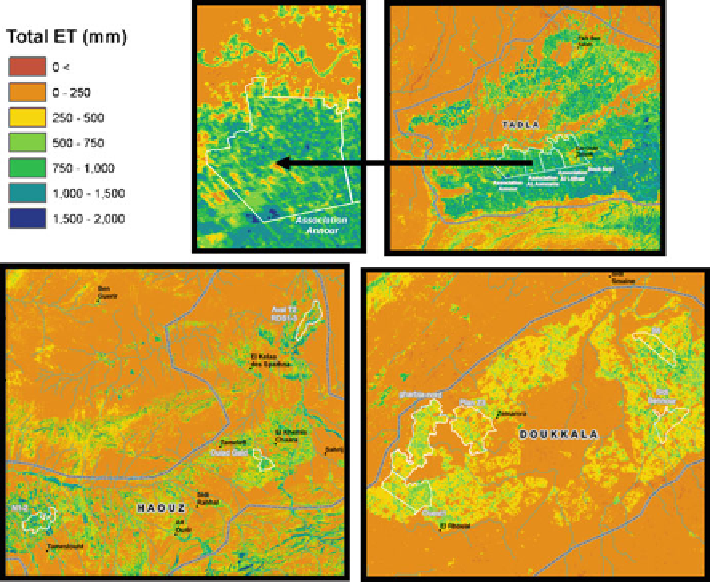Environmental Engineering Reference
In-Depth Information
Fig. 13.7
Annual ET (Sept. 2006-Aug. 2007) for all three ORMVAs with an enlargement of a
pilot irrigation sector in Tadla showing detail of Landsat and METRIC model results
to be zero. The water balance was formulated as an estimate of the irrigation
supplied by groundwater resources:
GW
abstract
¼ ET
act
P
effect
SW
irrig
(13.10)
where
GW
abstract
is the groundwater resources abstracted for irrigation and con-
sumed by crops;
ET
act
is the actual evapotranspiration—the total crop
consumption—taken from the METRIC-derived actual ET maps;
P
effect
is the
effective precipitation that contributes to satisfying crop demands and computed
from gridded precipitation estimates based on weather station data analysis
described in Sect.
4
and validated with satellite-based grid data; and
SW
irrig
is the
surface water irrigation deliveries per ORMVA records for each irrigated perimeter
(average size approximately 100 ha), with volumes converted to irrigation depth
based on adjusted irrigated sector areas calculated using GIS tools. In addition, a
groundwater
indicator was derived for monitoring and assessing irrigation
performance:
GW Indicator
ð%Þ¼ðGW
abstract
=ET
act
Þ
100
(13.11)

Search WWH ::

Custom Search